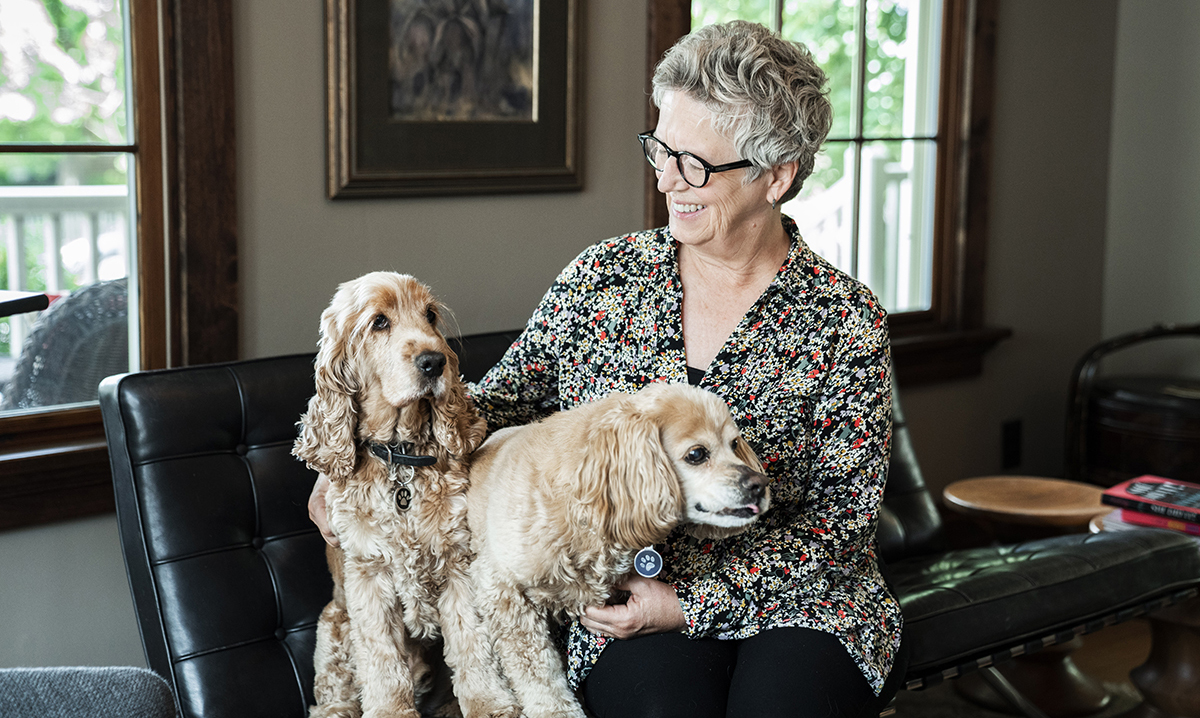Breast Reconstruction Surgery
Breast reconstruction surgery takes place in two stages:
- Placing the tissue expander
- Reconstructing the breasts after the tissue is expanded
Your care team will review each of the stages with you and what you need to be prepared for this process.
Stage One: Placing The Tissue Expander
In stage one of breast reconstruction, your medical team will need to prepare your chest tissue for the final reconstruction. Surgeons will place a tissue expander underneath your chest wall muscles to slowly expand the tissue in preparation for either implants or tissue based reconstruction.
Your doctor may also use an acellular dermal matrix to provide additional support for the tissue expander. An acellular dermal matrix is a type of collagen graft that is placed over the tissue expander to reinforce (or support) the tissue. It can be made from either human or animal tissue.
There are no live cells in this graft. It provides support and acts as a framework for the patient’s own tissue and vessels to grow into.
Filling the Tissue Expander After Surgery
About three weeks after surgery, when you’ve had some time to heal, we will begin to fill the tissue expander with more fluid. This procedure is called expansion. It will stretch your chest skin and tissue over the expander and prepare it for stage 2 of reconstruction. Most patients have weekly expansions until their breasts reach the size they want.
Surgical Risks with Tissue Expanders
- Infection—Infection can happen when a tissue expander is placed under the skin and muscle. Antibiotics often solve the problem, but serious infections may require removing the expander.
- Breakdown of the incision line—If the incision line breaks down, we may have to remove fluid from the expander and re-suture the incision (stitch up the cut). The tissue expander may also have to be temporarily removed.
- Necrosis of the skin—Necrosis is the death of cells, in this case in the skin. It is caused by tissue trauma or the loss of circulation. If this happens, an area of skin may need to be removed surgically.
- Expander failure—Rarely, the expander fails for mechanical reasons. In some cases, we may need to replace your expander.
Stage Two: Implant Based Vs. Tissue Based Reconstruction
At this stage, your tissue expander has been filled to stretch the skin and muscle of your chest to prepare for your final reconstruction. Once expansion is finished and you have recovered from adjuvant cancer treatments, you will meet with your surgeon to discuss your goals and to determine the method of final reconstruction that will be best for you: implant based or tissue based reconstruction.
Breast Reconstruction With Implants
Implant based reconstruction, which uses either saline or silicone implants, can be a good option for women whose wounds are healing normally and don’t need any radiation therapy.
Breast Reconstruction With Tissue
Tissue based reconstruction, also called flap reconstruction, uses tissue from your back or abdomen. This type of reconstruction may be recommended for women who have had radiation, an infection, or a healing problem after surgery.
When surgeons use tissue from your back (called a latissimus flap), surgeons use your own tissue in combination with an implant. When surgeons use tissue from your abdomen, the abdomen tissue provides both the shape and volume of the reconstructed breast.
Reconstructive Breast Surgery Doctors Near You
Reconstruction After Unilateral Mastectomy
For patients who have had a unilateral mastectomy (only one breast removed), a surgery on the opposite breast may be remaining to make the reconstructed breast and remaining breast look as similar as possible.
These procedures are:
Can Reconstructive Surgery Be Done At The Same Time As A Mastectomy?
One of the decisions you will be asked to make is whether you want your breast to be reconstructed immediately after your reconstruction, or if you want to wait (also called delayed reconstruction).
Immediate reconstruction means the first stage of breast reconstruction is performed on the same day as your mastectomy.
Delayed reconstruction means you have your mastectomy and start the reconstruction process later after your cancer treatments are finished.
Recovering From Breast Reconstruction
For a smooth recovery, you must follow your plastic surgeon's aftercare instructions. Learn what you can expect as your body heals after your breast reconstruction.


Hear From Our Patients
After being diagnosed with breast cancer, Terri Jones had a plan. “When it got to the idea of reconstructive surgery, all I knew is that I didn’t want anything foreign in my body,” Jones said. “I didn’t want implants and I thought that meant I wouldn’t have reconstruction at all.” After speaking to a friend who had breast cancer, Jones learned there are many more options when it comes to breast reconstruction than she realized. This meant she could make a choice right for her.


